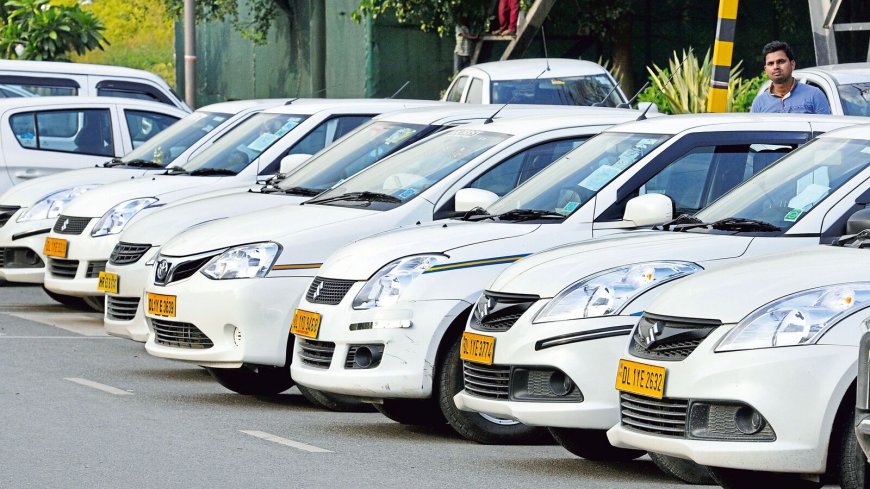Single-window licensing portal for cab aggregators may go live by year-end
The Indian government is set to launch a centralized licensing portal for cab aggregators by the end of 2025 to simplify compliance and boost ease of doing business in the mobility sector.

Streamlining Ride-Hailing Compliance
In a significant step towards easing regulatory compliance for app-based cab services, the Indian government is expected to launch a single-window licensing portal for cab aggregators such as Ola, Uber, Rapido, and BluSmart by the end of 2025. This move is part of a broader push to simplify business operations, reduce bureaucratic hurdles, and ensure uniform enforcement of transport rules across states.
The Ministry of Road Transport and Highways (MoRTH), in coordination with the Ministry of Electronics and Information Technology (MeitY), is developing the portal to create a centralized online mechanism that consolidates the licensing process for mobility platforms under the Motor Vehicle Aggregator Guidelines, 2020.
Reducing Red Tape for Aggregators
Currently, aggregators must apply for separate licenses in each state they operate in, a process that is both time-consuming and inconsistent due to varied interpretations of central guidelines at the state level. The proposed single-window system aims to resolve these challenges by offering a unified digital platform where companies can apply, track, and renew licenses with standard documentation requirements.
“The portal will reduce redundancy and allow faster approvals, especially for startups and growing companies in the mobility space,” said a senior government official involved in the project. “It will also help enforce compliance more uniformly across jurisdictions.”
The centralized system will be linked with the National Informatics Centre (NIC) and is likely to be integrated with other government databases, such as Vahan (vehicle registration) and Sarathi (driver licensing), ensuring real-time verification and compliance checks.
Key Features of the Portal
-
One License for All States: Aggregators will be able to apply for a pan-India license instead of navigating different state-level processes.
-
Digital Submission: All documents and forms will be submitted online, reducing physical paperwork and in-person visits.
-
Faster Turnaround: Standardized processing time for application approvals is expected to reduce delays in launching operations in new cities.
-
Real-Time Monitoring: Authorities will be able to track compliance, ride data, driver records, and safety metrics from a central dashboard.
Industry Response and Challenges
The ride-hailing industry has responded positively to the news, calling the move a “game-changer” for logistics and mobility startups. “A centralized licensing portal will bring much-needed clarity and predictability to the sector,” said Ankit Gupta, Director at the Mobility Startups Association of India. “Smaller players will find it easier to scale without legal roadblocks.”
However, there are still concerns over how data-sharing mechanisms and inter-state enforcement will be structured. Aggregators are expected to maintain real-time data sharing with local transport departments, raising questions about privacy and surveillance.
“We appreciate the government’s push for digitization,” said an Uber India spokesperson. “At the same time, data governance, grievance redressal, and interoperability will be key pillars to get right.”
Market Context and Regulatory Push
The Indian ride-hailing market, valued at over $14 billion in 2024, is projected to grow at a compound annual growth rate (CAGR) of 10% through 2030, driven by urbanization, smartphone penetration, and consumer preference for shared mobility. Yet, regulatory friction has been a persistent roadblock.
In 2023, several aggregators faced fines and service disruptions due to lack of proper state licenses or non-compliance with local fare regulations. State transport authorities in Delhi, Karnataka, and Maharashtra had taken varying stands on issues like bike taxis and surge pricing, making operations patchy across geographies.
The Aggregator Guidelines of 2020 attempted to bring consistency, but lack of enforcement infrastructure hampered their execution. A centralized licensing portal is expected to revive confidence among investors and operators alike.
Investor and Policy Outlook
From an investor standpoint, the reform aligns with the broader narrative of 'Ease of Doing Business' in India. As the government prepares to launch this system ahead of Budget 2026, many believe it could unlock new capital inflows into the mobility and electric vehicle (EV) sectors.
“This digital licensing system is a crucial regulatory infrastructure upgrade,” said Rashi Sharma, mobility sector analyst at Motilal Oswal. “It minimizes uncertainty and improves scalability, particularly important for EV-first aggregators looking to expand aggressively in Tier 2 and Tier 3 cities.”
The portal is also expected to pave the way for data-driven policymaking, allowing the government to study traffic patterns, emissions data, and safety records more efficiently, thereby supporting smart city initiatives.
Final Word
With a targeted rollout by December 2025, the single-window licensing portal could mark a turning point for the cab aggregator industry in India. While implementation details and inter-agency coordination remain critical, the move is widely viewed as a welcome step toward creating a level playing field and a more predictable regulatory environment for one of India’s fastest-growing tech-enabled sectors.
What's Your Reaction?
 Like
0
Like
0
 Dislike
0
Dislike
0
 Love
0
Love
0
 Funny
0
Funny
0
 Angry
0
Angry
0
 Sad
0
Sad
0
 Wow
0
Wow
0













































































